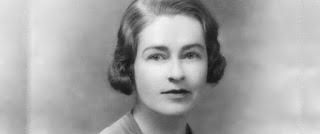35. Margaret Leech
“Its perfect final gesture was to contribute one hundred and three dollars to the Washington Monument—that abbreviated shaft, beside which a Government slaughterhouse was now established, with the offal rotting two and three feet deep.” -Margaret Leech
In 1860, Washington, D.C. was a country town. Established in 1790 as a federal district by an act of Congress, and opening for business as a capital city in 1800, after six decades of existence, Washington had not yet come into its own. Carved out of land belonging to Maryland and Virginia, D.C.had never developed beyond a handful of federal buildings and a few rambling, if admittedly grand, hotels lining Pennsylvania Avenue. Otherwise, it was a bleak amalgamation of semi-rural settlements, a fetid, unsanitary town where people dumped their refuse in the gutters and outhouses lined overgrown yards and dank alleys. “It was a Southern town,” notes Margaret Leech in Reveille in Washington, her history of the capital during the Civil War, “without the picturesqueness, but with the indolence, the disorder, and the want of sanitation.”
Even the government buildings were few and only intermittently impressive. Described jeeringly as a “city of magnificent distances,” Washington was home to, at best, six notable federal buildings (the White House, the Capitol, the Post Office, the Patent Office, the Treasury, and the Smithsonian) and a handful of scattered statues. The Capitol building, “first in importance” among the lot per Leech, was at the time of the outbreak of the Civil War, in the midst of a major renovation and extension, which, although in its latter stages, was conspicuous for its signs of incompleteness. This was most obvious in the case of the dome: while the original had been removed, its replacement had not been completed, leaving just the base, lots of scaffolding, and a jumbo-size crane poking up into the open air.
Meanwhile, a mile and a half away, the Washington Monument remained barely one-quarter completed, a squat stump that had stood unchanged since 1854, when the donations that had enabled its construction ran dry. Building would not resume until 1879, three years after, on the occasion of the country’s centennial, Congress finally allocated $200,000 for renewed construction. Eventually completed in 1885, the Monument opened to modest fanfare, with 800 people attending the dedication, where they listened to speeches from the likes of President Chester Arthur and Senator John Sherman and watched a full military procession march down Pennsylvania Avenue. The Monument, at 555 feet, was the tallest structure in the world, and would remain so for four years, until the Eiffel Tower was completed in 1889.
But in 1860, it was nothing but an aborted lump, a symbol, available to anyone who wanted it, of the provisional nature of both the city and the nation as a whole. Conjuring up the image of the adjacent "Government slaughterhouse," Leech cheerfully pulls the symbolism deeper. Evoking the filthiness and rot of the city, this federal abattoir, at the same time, foreshadows the butchery to come. The rotting offal of cows and pigs, we are meant to understand, will soon be joined by the loosened viscera of hundreds of thousands of soldiers.
Perhaps, though, not those of the Seventh New York. Signed up for a thirty-day enlistment at the start of the war when it seemed the conflict would be over in a matter of weeks, by the spring of 1861, the regiment’s service was coming to a close. After two days of a digging detail near the Monument, they retreated for good, leaving a parting gift, sardonically described by Leech as a “final perfect gesture,” of $103 towards the continued construction of the obelisk. The exactness of the amount as well as its insufficiency (the donation would be a little over $3,000 today), reads, in retrospect, as a patent absurdity. A gentlemanly gesture at the start of a conflict that would begin with gentlemanly expectations and end in wholesale slaughter, its very superfluousness sums up, in Leech’s restrained irony, a colossal misreading of the national mood and situation.
That situation would leave three-quarters of a million dead over five years, but it would also fundamentally transform not only the nation but its capital as well. Over the course of the war, the city began to pave its streets, to improve its sanitation, and to build hundreds of new houses, all spurred on by the trade in army supplies which fueled the wartime economy. By the time Lee surrendered at Appomattox, Washington had begun a radical transformation from country town to contemporary city, which would see its population increase by 75 percent between 1860 and 1870. Shortly after the war’s end, the Capitol dome was completed, construction on the Washington Monument was resumed, and D.C. became a proper capital for an at least tentatively reunited nation, one that could legitimately view itself as more than a mere confederation of semi-autonomous states. Built on tenuous, marshy foundations, by 1865, Washington—as city and as symbol—had crystallized. The refuse and the offal had been sucked back into the swamp, and the people of the District could breathe in, if only for a passing moment, something that bore a vague resemblance to fresh air.



Comments
Post a Comment